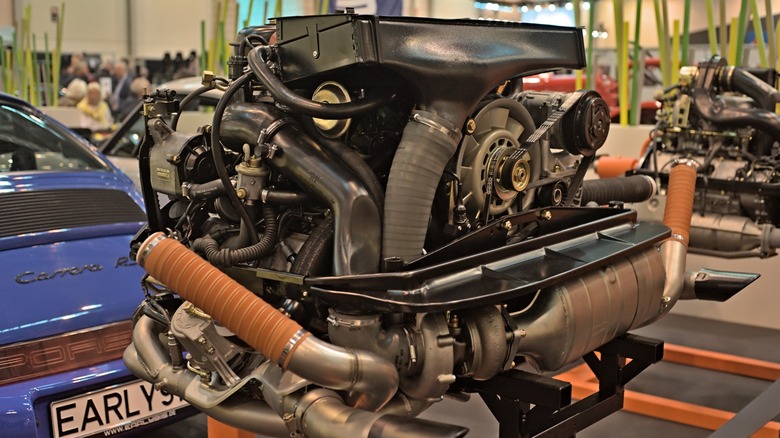Your Best Vehicle Components Shop for Engines for Africa and Extra
The Mission for Ultimate Driving Power: Examining the Pinnacle of Engine Performance and Technological Breakthroughs in the Automotive Market
In the realm of vehicle engineering, the quest of optimum driving power has been an unrelenting pursuit that has unravelled through the development of engine layout and the integration of innovative innovations. From the thorough craftsmanship of combustion engines to the quick advancements in electrical propulsion systems, the automotive industry stands at the cusp of a brand-new period characterized by unmatched efficiency capabilities. As engineers and scientists dig much deeper into the realms of computational liquid characteristics and discover cutting-edge gas innovations, the horizon of possibilities increases significantly. Keep tuned as we unravel the complex tapestry of technical advancements that are shaping the future of auto power and performance.
Advancement of Engine Layout

Furthermore, the combination of turbocharging and turbo charging modern technologies has actually changed engine design by boosting power without dramatically increasing engine size. These forced induction systems press the intake air, enabling more gas to be ignited, therefore producing higher power result from a smaller sized engine. This advancement has been particularly critical in improving the efficiency of smaller displacement engines while preserving gas efficiency requirements.

Performance-Enhancing Fuel Technologies
The implementation of advanced gas technologies has considerably contributed to boosting engine performance in modern lorries. Biofuels, acquired from sustainable sources like algae, corn, or sugarcane, deal lowered discharges and improved engine efficiency. Furthermore, fuel additives and cleaning agents are being created to tidy engine components, enhance combustion, and lower rubbing, consequently enhancing overall car efficiency.
Advancements in Electric Propulsion
Considerable strides in electrical propulsion modern technology have transformed the vehicle sector, leading the way for a new period of efficient and sustainable transportation. Electric automobiles (EVs) are acquiring appeal because of their ecological advantages and innovations in battery modern technology, enabling longer driving ranges and shorter charging times. Producers are investing heavily in r & d to boost the efficiency of electrical propulsion systems, concentrating on raising power result, boosting power efficiency, and reducing total weight.
One notable advancement in electric propulsion is the growth of innovative electrical motors that supply higher torque and power thickness, causing enhanced acceleration and overall driving efficiency. In addition, regenerative stopping systems have been refined to record and keep power during slowdown, more increasing the effectiveness of EVs.
Additionally, the combination of wise innovations, such as expert system and anticipating analytics, is enhancing the monitoring of electric propulsion systems, making certain ideal efficiency under various driving problems. These innovations in electrical propulsion are improving the vehicle landscape, driving the industry towards a more lasting and electrified future.
Impact of Computational Fluid Dynamics
With advancements in electric propulsion pushing the limits of auto modern technology, the combination of Computational Liquid Dynamics is playing a pivotal function in enhancing aerodynamic efficiency and enhancing general efficiency in lorry style. Computational Fluid Characteristics (CFD) involves using computer system simulations to analyze the circulation of air around an automobile, making it possible for engineers to anticipate exactly how style changes will browse this site affect the rules of aerodynamics without the need for expensive physical models. By precisely modeling air flow patterns, CFD permits for the refinement of car forms to lower drag, improve cooling, and boost security.
CFD makes it possible for designers to optimize air flow around components such as radiators, engine bays, and wheel wells, contributing to boosted efficiency and overall driving experience. In conclusion, the assimilation of Computational Liquid click site Characteristics represents a substantial action forward in the quest for best driving power and effectiveness in the auto sector.
Future Patterns in Engine Development
In the dynamic landscape of vehicle design, sophisticated developments are forming the future trajectory of engine advancement. The future of engine design is noted by a strong emphasis on efficiency, sustainability, and efficiency. Suppliers are progressively focusing on creating engines that not only supply high power outputs yet also focus on ecological obligation by reducing discharges and boosting fuel efficiency.
One noticeable pattern in engine advancement is the surge of electrification. Hybrid and electrical powertrains are gaining grip as sensible alternatives to standard burning engines. These technologies use the potential for substantial reductions in carbon emissions and boosted power efficiency, lining up with global initiatives to combat climate modification.
Moreover, advancements in products scientific research and production strategies are making it possible for the production of lighter and extra long lasting engine components. This change towards lightweight materials such as carbon fiber and aluminum alloys adds to boosted efficiency and gas economy.
Final Thought
Finally, the quest of utmost driving power in the auto market remains to drive advancements in engine design, fuel technologies, electric propulsion, and computational fluid characteristics. The advancement of these modern technologies is forming the future of engine innovation, leading the way for extra powerful and effective automobiles (engines for africa). As the market this content continues to push the boundaries of what is feasible, we can expect to see a lot more cutting-edge growths in the mission for peak performance
One of the essential turning points in engine style development is the shift from conventional carbureted engines to contemporary fuel-injected systems. By exactly metering the fuel delivery to each cyndrical tube, fuel-injected engines maximize combustion, resulting in better efficiency and minimized ecological impact.
Furthermore, the assimilation of turbocharging and turbo charging technologies has actually reinvented engine style by increasing power without considerably increasing engine dimension (engines for africa).The implementation of innovative fuel innovations has dramatically added to enhancing engine efficiency in modern lorries. Furthermore, gas additives and cleaning agents are being formulated to tidy engine elements, optimize combustion, and reduce rubbing, therefore enhancing total vehicle performance